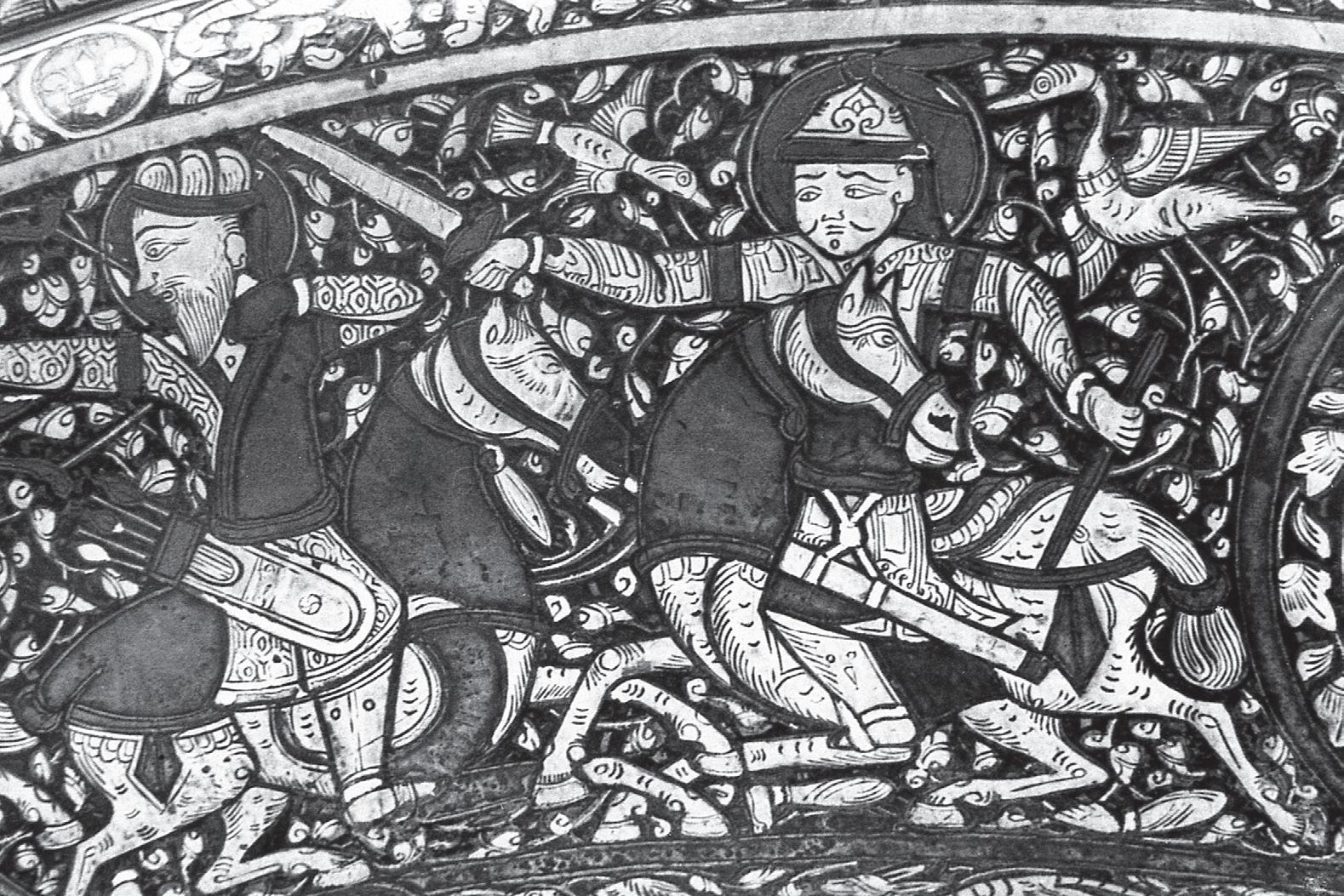Detail on the inside of the Baptistère de Saint Louis

Photograph 29. Detail from the inlaid decoration of the “Baptistère de Saint Louis”, Mamlūk, Egypt, late 13th-early 14th century (Musée du Louvre, Paris, France).
Note the brimmed helmet or hat.
Source: p.233,
"The Iconography of a Military Elite: Military Figures on an Early Thirteenth-Century Candlestick (Part II)" by David Nicolle, in Mamlūk Studies Review Vol. 19, 2016
An extract from Armies and Enemies of the Crusades 1096-1291 by Ian Heath:
Another typical Mamluk weapon related to the mace but only recorded in later sources is the Ghaddara, a steel staff kept in a case at the saddle and capable of cutting off a man's arm.
One figure in the Baptistère de Saint Louis seems to be carrying such a weapon, where it appears to be about 30 inches long.
An extract from Armies of the Middle Ages, Volume 2 by Ian Heath:
Another type of sword called a ghaddara, mistakenly described by Mayer as a 'steel staff' was kept in a scabbard at the saddle.
This was the Persian quaddara, a broad, long, straight-bladed sword which had parallel edges for most its length; it is probably this same weapon that Pero Tafur intended by his description of Ottoman cavalrymen carrying 'an iron staff' at the saddle.
Back to the figures inside the rim of the Baptistère de Saint Louis.

